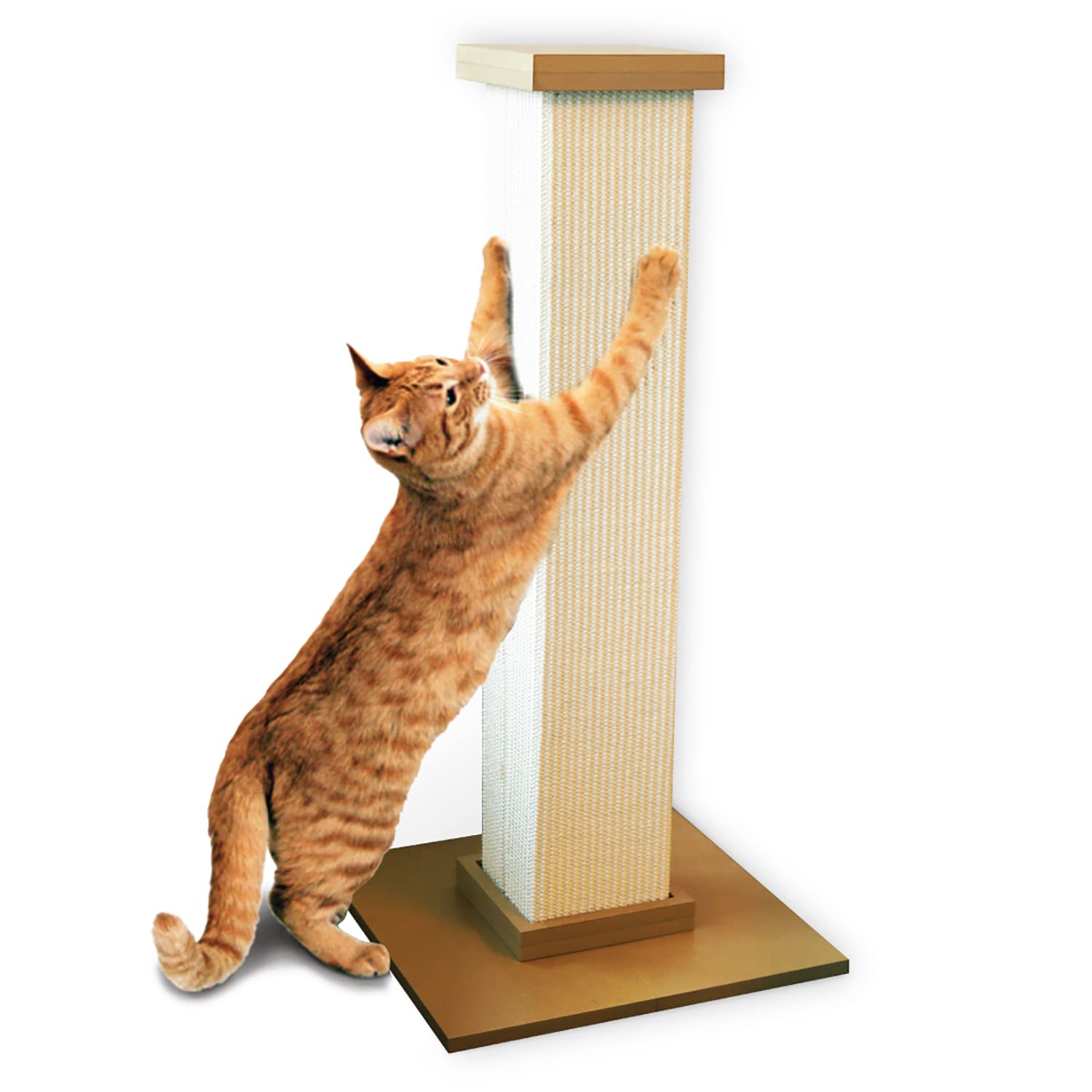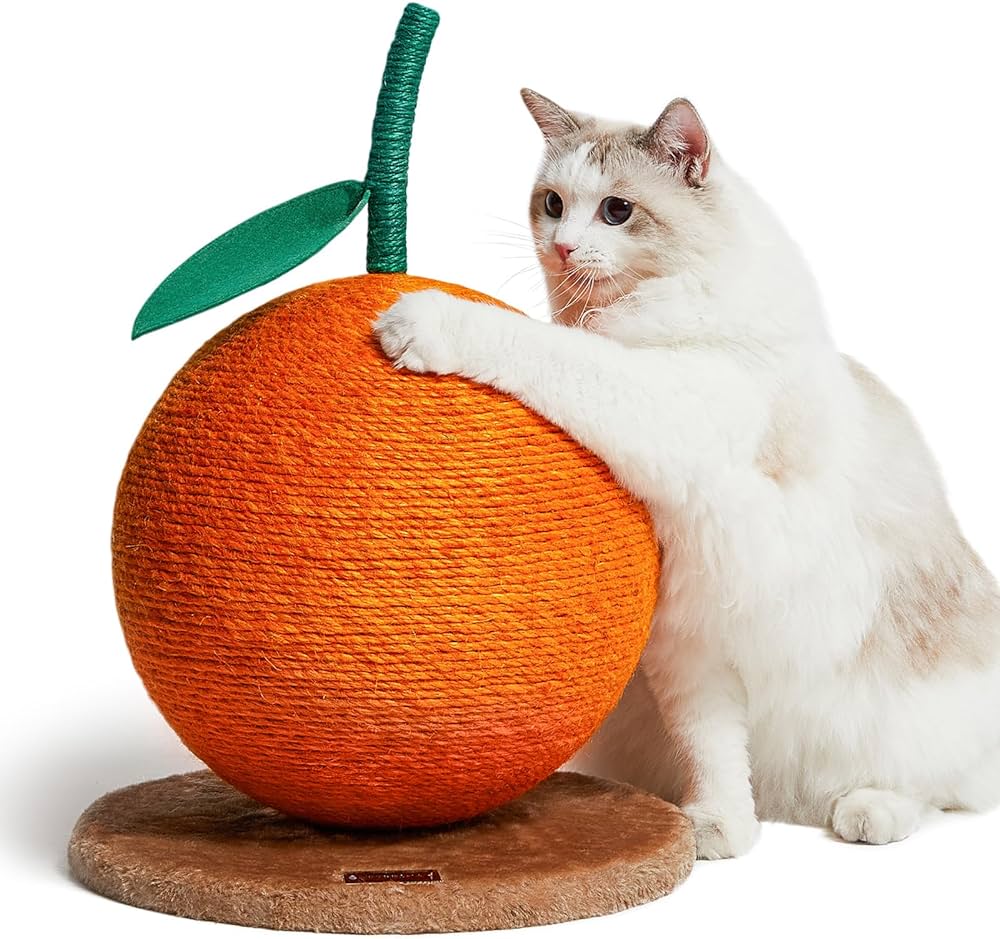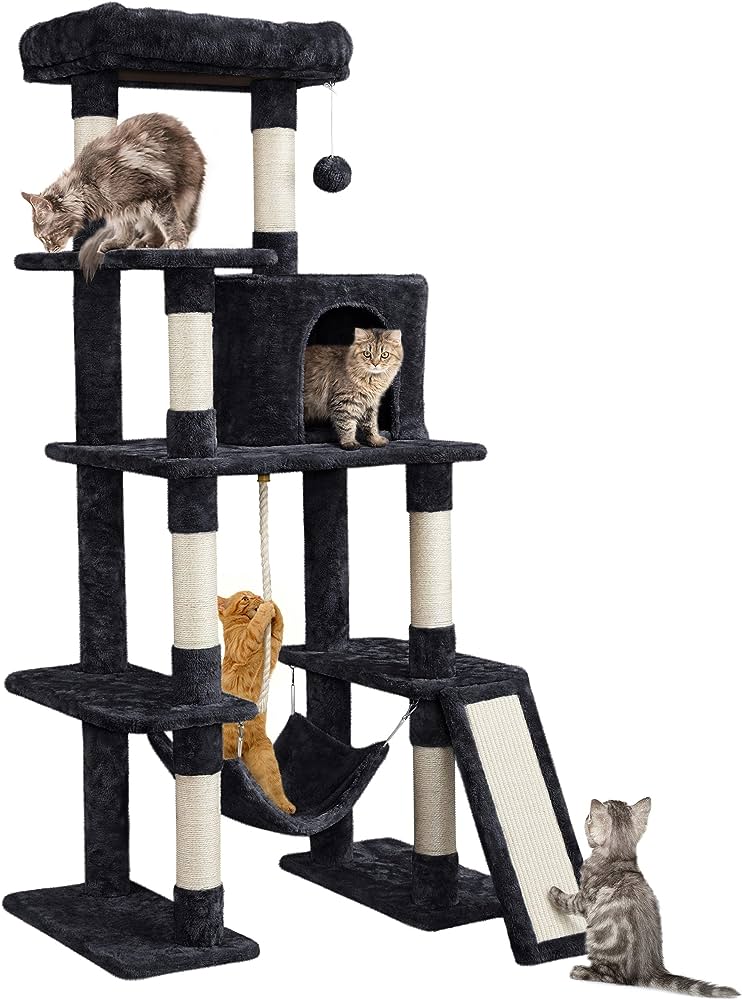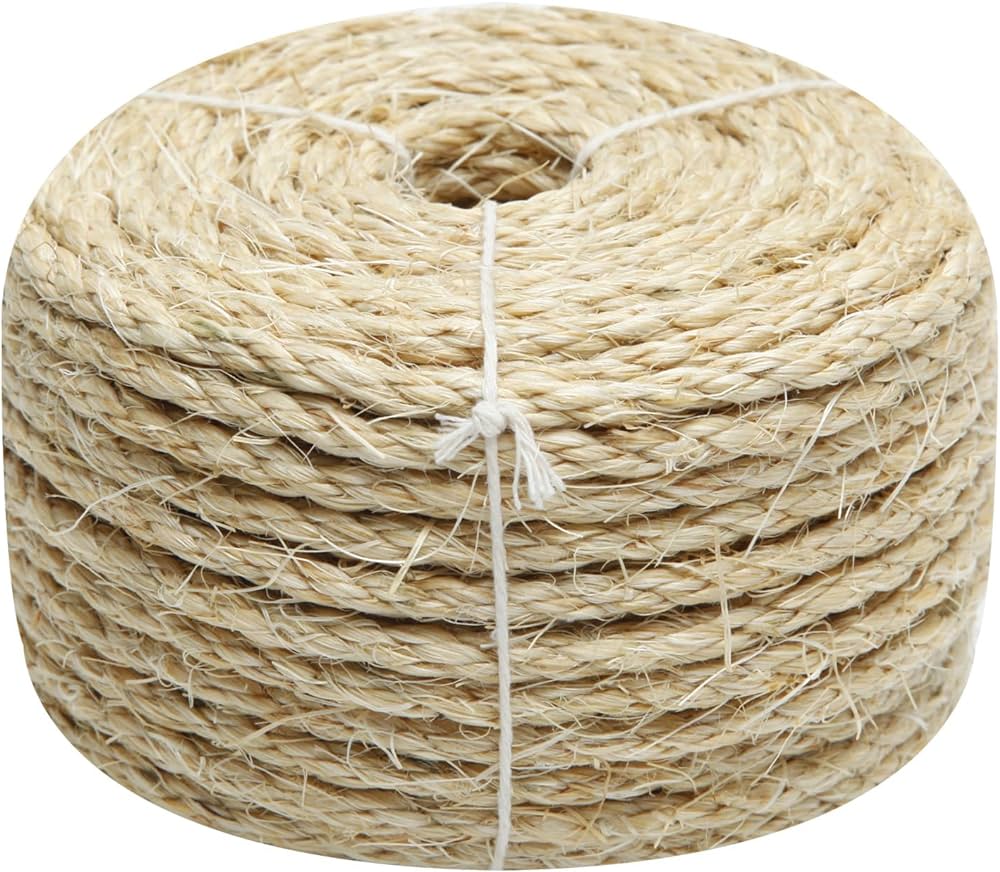Change your cat scratching post when it shows signs of wear or once every 12 to 18 months. Assess its condition regularly to ensure it remains effective and safe for your cat.
A cat scratching post is an essential item for any feline-friendly household. It provides your furry friend with a designated area to fulfill their natural scratching instincts, which helps keep their claws healthy and offers physical exercise. Regular inspection is key, as a well-used post can become frayed and potentially hazardous.
Over time, the structure might lose its sturdiness, which could discourage your cat from using it and possibly lead them to seek out less desirable alternatives, such as your furniture. Keeping an eye on the scratching post’s condition will help you determine the perfect time for a replacement, ensuring your pet’s continued happiness and safeguarding your home items.
Recognizing The Signs Of Wear
Keeping your furry friend’s scratching post in top condition matters for their happiness and claw health. It can be tricky to determine when it’s time for a new scratching post. By looking for specific signs of wear, you can ensure your cat’s scratching post is safe and satisfying to use. Pay attention to visual cues and observe any behavioral changes in your cat to decide when a replacement is due.
Visual Cues
Visual signs are the most obvious indicators that a scratching post is due for a change. Check for these cues:
- Fraying or Unraveled Rope: Sisal or jute fibers coming undone suggest it’s time for a switch.
- Bare Spots: Areas lacking material can’t satisfy your cat’s scratching needs.
- Stability Issues: Wobbling posts can deter use and may even be dangerous.
- Embedded Debris: Dirt and nail fragments embedded in the post could discourage scratching.
Behavioral Changes In Cats
Changes in your cat’s behavior can also signal the need for a new scratching post. Observe your cat closely for the following:
- Scratching Elsewhere: Cats turning to furniture or carpet may need a fresher post.
- Less Interest: A decrease in scratching post use could indicate dissatisfaction.
- Visible Frustration: Signs of annoyance or stress while scratching suggest it’s time for a change.
Consistently monitoring your scratching post’s condition and your cat’s interaction with it will guide you to the right time for a replacement.
Scratching Post Lifespan
Understanding the lifespan of your cat’s scratching post is vital. A well-maintained post keeps your furniture safe and provides a healthy outlet for your feline friend. Let’s explore factors that determine how long your scratching post should last.
Material Durability
The durability of the material is a primary factor in a scratching post’s lifespan. Scratching posts come in various materials, including:
- Carpet: Soft but less durable, often replaced yearly
- Sisal fabric: More resilient, lasts longer than carpet
- Sisal rope: Highly durable, withstands vigorous scratching
- Wood: Extreme durability, can last for years with minimal wear
Select a post made with sturdy materials to ensure longevity and save costs in the long run.
Frequency Of Use
How often your cat uses the scratching post greatly affects its lifespan. Consider these points:
| Usage Level | Scratching Post Condition Over Time |
|---|---|
| High frequency | Quick wear, may require replacement within months |
| Moderate frequency | Gradual wear, typically replaced every one to two years |
| Low frequency | Minimal wear, can last several years before needing replacement |
Observe your cat’s scratching habits to anticipate when a new post might be needed.
Types And Quality
The type and quality of the scratching post are crucial. A quality post often features:
- Solid construction that doesn’t wobble
- High-grade materials resistant to shredding
- Appropriate height for full stretch scratches
Opting for a superior quality post not only extends the post’s life but also enhances your cat’s satisfaction.
Impact On Feline Health And Behavior
Cats need to scratch for a happy, healthy life. Their scratching posts protect your furniture and give them a space to stretch and claw. Knowing when to replace this key item can greatly affect your cat’s well-being.
Claw Health
A good scratching post keeps your cat’s claws sharp and healthy. Over time, posts can become too worn to work. Look for fraying or compacted surfaces. Cats may avoid a post that doesn’t feel right. This neglect can lead to overgrown or splintered claws.
Stress Relief
Scratching is a stress buster for cats. A sturdy post helps them stretch and release tension. Worn-out posts might not provide enough resistance. Replace them to ensure your kitty stays calm and content.
Territory Marking
Scratching posts let cats claim space with scent and visuals. Faded marks may prompt more scratching. This can speed up the wear of the post. Swap out old posts to keep your cat’s marking habits healthy and your home scratch-free.

Credit: www.powerreviews.com
Maintenance Tips For Longevity
The longevity of a cat scratching post relies on regular maintenance. With the proper care, these posts can withstand the vigorous affection of your feline friends. Explore these tips to ensure the scratching post stays in peak condition for your cat’s enjoyment.
Routine Inspection
Performing consistent checks on the scratching post helps catch issues early. Look for signs of wear such as loose parts or frayed sisal. Check stability; a wobbly base can deter use. Regular inspections extend the life of the post.
Cleaning Methods
Cleaning is crucial for a hygienic play area. Follow these steps:
- Vacuum to remove fur and dirt.
- Use a mild detergent and water for spot cleaning.
- Avoid harsh chemicals that could harm your cat or the post.
- Let the post dry completely before allowing your cat to use it again.
Repair And Restoration
Over time, some parts might require fixing. Replace worn-out sisal rope or fabric to refresh the post. Reinforce any loose sections with strong adhesive or staples. A well-maintained post can save owners from frequent replacements.
When To Replace
Cat scratching posts play a vital role in your pet’s life. They help keep claws healthy and provide a fun activity for your cat. Like all things, they wear out and need replacement. Recognizing when to swap out the old for a new scratching post is key to maintaining your cat’s happiness and well-being.
End-of-life Indicators
Here are signs that a scratching post is ready for retirement:
- Fraying Fabric: If sisal or carpet looks shredded beyond use.
- Stability Issues: When the base wobbles or tips during use.
- Exposed Nails or Staples: These can be dangerous and mean the post is unsafe.
- Disinterest from Cat: A clear sign that the post is no longer appealing.
Upgrading Options
Upgrade options provide increased enjoyment and can be tailored to your cat:
| Option | Description |
|---|---|
| Taller Posts | Allows full stretch and climbing. |
| Multipurpose Units | Includes hideaways, perches, and toys. |
| Different Materials | Offers variety, like wood or cardboard. |
Recycling Old Scratching Posts
Don’t just throw away the old post. Recycle and be eco-friendly:
- Donate usable parts to animal shelters.
- Repurpose materials for DIY projects.
- Check local recycling rules for proper disposal.

Credit: www.amazon.com
Choosing The Right Replacement
Is your furry friend less enthusiastic about their once-beloved scratching post? Finding the right replacement isn’t just about buying a new piece of cat furniture. It’s about ensuring your cat’s continued happiness and the longevity of your purchase.
Assessing Your Cat’s Needs
The perfect scratching post caters to your cat’s individual preferences. Consider size, material, and location. Is your cat a small kitten or a full-grown Maine Coon? Do they enjoy stretching up high, or do they prefer horizontal scratching? Answering these questions can guide your choice.
- Measure the size of the current post
- Note your cat’s scratching habits
- Ponder over wear and tear patterns
Exploring Different Styles
Variety is the spice of life, and that includes scratching posts! Options range from traditional posts to modern towers. Consider incorporating a variety that suits your cat’s playfulness and your home decor.
| Style | Benefits |
|---|---|
| Classic Post | Simple, space-saving |
| Scratching Pad | Flat, fits anywhere |
| Cat Tree | Combines play and scratch |
Investing In Sustainability
Sustainability matters. Choose eco-friendly materials that are durable and can be recycled or replaced without harm to the environment. Investing now means saving more later, both economically and ecologically.
- Look for recyclable materials like cardboard or sisal
- Check for replaceable parts, like removable scratch pads
- Consider longevity and overall build quality

Credit: www.rspcapetinsurance.org.au
Frequently Asked Questions On How Often Should You Change Cat Scratching Post
When To Replace A Cat Scratching Post?
Cat scratching posts should be replaced when they show significant wear and tear. This typically occurs every 1 to 2 years, depending on usage and material quality. A worn-out post may not attract your cat and can lead to furniture damage.
What Signs Indicate Scratching Post Renewal?
Look for threads hanging loose, exposed frame, or any structural weakness. Cats prefer sturdy posts; a shaky one can dissuade use. If your cat ignores the post or it seems unsafe, it’s time for a replacement.
Can A Cat Scratching Post Be Too Worn Out?
Yes, a cat scratching post can be too worn out. When the scratching surface becomes smooth or the structure is compromised, it’s less effective and enjoyable for your cat. At this point, it doesn’t serve its purpose and should be replaced.
How Do Material Types Affect Post Longevity?
Different materials have varying durability. Sisal rope is durable and can last years, whereas carpet and cardboard may wear out faster. Choose material based on your cat’s preference and desired longevity of the post.
Conclusion
Finding the right balance for replacing your cat’s scratching post promotes their well-being and saves you money. Observe your pet’s behavior and the condition of the post regularly. Aim for a refresh when wear and tear shows, or your feline friend’s interest wanes.
Remember, a happy, active cat equals a happy home!



